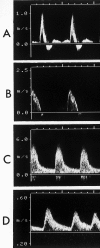ABC of arterial and venous disease. Non-invasive methods of arterial and venous assessment
- PMID: 10710584
- PMCID: PMC1117713
- DOI: 10.1136/bmj.320.7236.698
ABC of arterial and venous disease. Non-invasive methods of arterial and venous assessment
Figures













Publication types
MeSH terms
LinkOut - more resources
Full Text Sources
Medical
